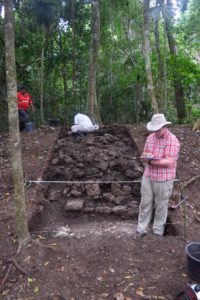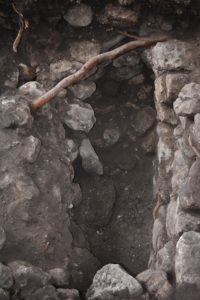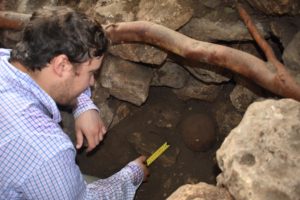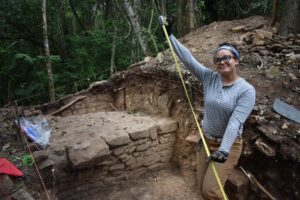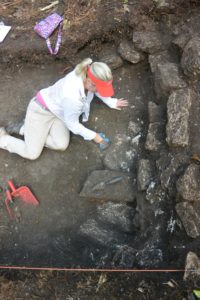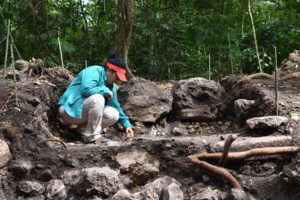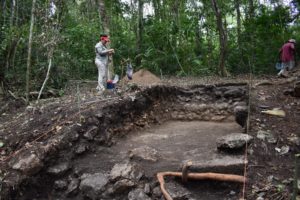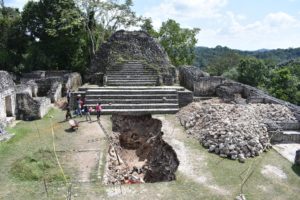This week saw the movement of significant amounts of earth and the recording of much of the latest architecture associated with the structures selected for excavation this season. For the most part the week was sunny. We were partially hindered by 2 missing men who went out because of a sick mother on Tuesday; one returned on Friday to let us know that he would not be coming back; the other one is supposed to return by Monday.
In the Rebel residential group, both excavations into the eastern buildings produced lower steps. The smaller of the two eastern buildings (C210C) also had its humus completely removed over the building; two lower plaza floors were in evidence in front of the step and no other architectural facings could be detected that went with the latest building. The larger, and more central, of the eastern buildings (C210B) also had its humus level totally removed. Besides the lower step, an infilled tomb (stretching across the excavation) became evident; it had been placed into the stairway of the latest building; clearing this chamber to reveal its dimensions showed that it had been cut into an earlier stairway, which had two steps in evidence that should lead to an earlier summit surface. A plain ceramic tecomate had also been placed high in the fill of the southern side of this chamber, becoming our first official cache of the field season.
In the Rouge residential group, both the northern and eastern buildings witnessed significant excavation. The northern building (C211C) is a stone structure. The excavators came down on a bench that rose 75 cm above the building floor to its south; the eastern “arm” of this bench is visible in the eastern section; the rear wall of the building joins with the bench surface and arm. Both jambs for the front door of the building were located south of the bench in various states of disrepair; the door had been 1.3 m wide. The search for the northern building steps will be pursued this coming week. In the eastern building (C211B) of Rogue, the humus was removed finding 2 (and possibly 3) lower steps. Several larger lajas were also visible below the steps in the southern part of the front excavation. This front excavation also produced significant amounts of obsidian, worked spondylus, and chert bladelets – possibly indicating that these items were processed and used in this residential group. Removal of the summit of this eastern building below the humus revealed a construction block fronted by vertical 50 cm slab-like stones. Below these large stones were small cobbles and the remains of a possible floor patch. Everything was drawn and excavation will go deeper on Monday.
On the summit of Caana, Jaime and his crew continued to lower the 12 m by 4 m trench (C1K) into the plaza on axis to Structure B20, exposing the upper half of the 1986 mask that articulates with the lower stairway by the end of the week. The top of the mask was missing, matching descriptions that it had been “excavated” by British soldiers in the late 80s before being backfilled. Jaime is suggesting that he will have much of the lower plaza floor visible for penetration by the middle of next week. Then, our real research will begin at this locus.
